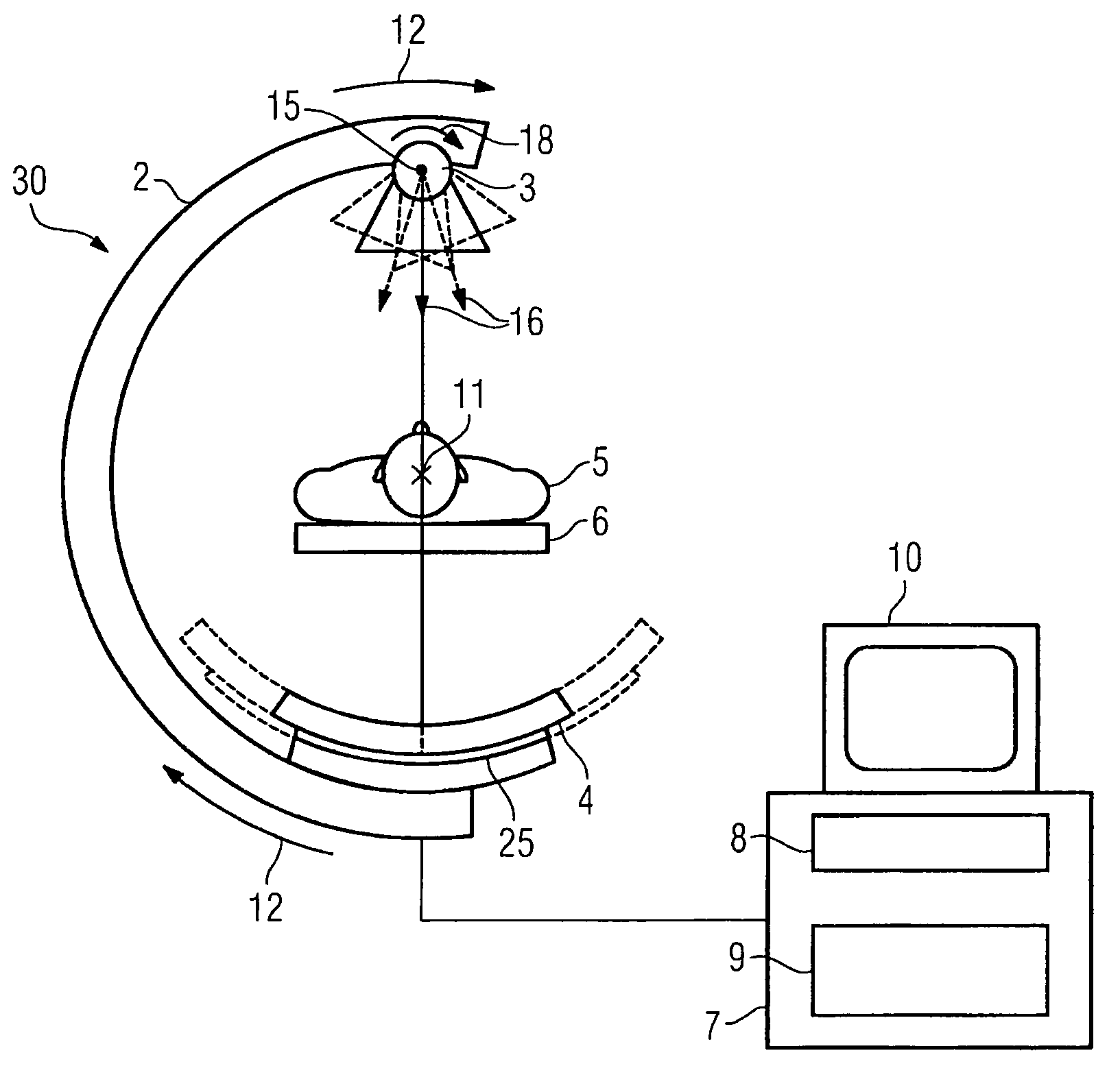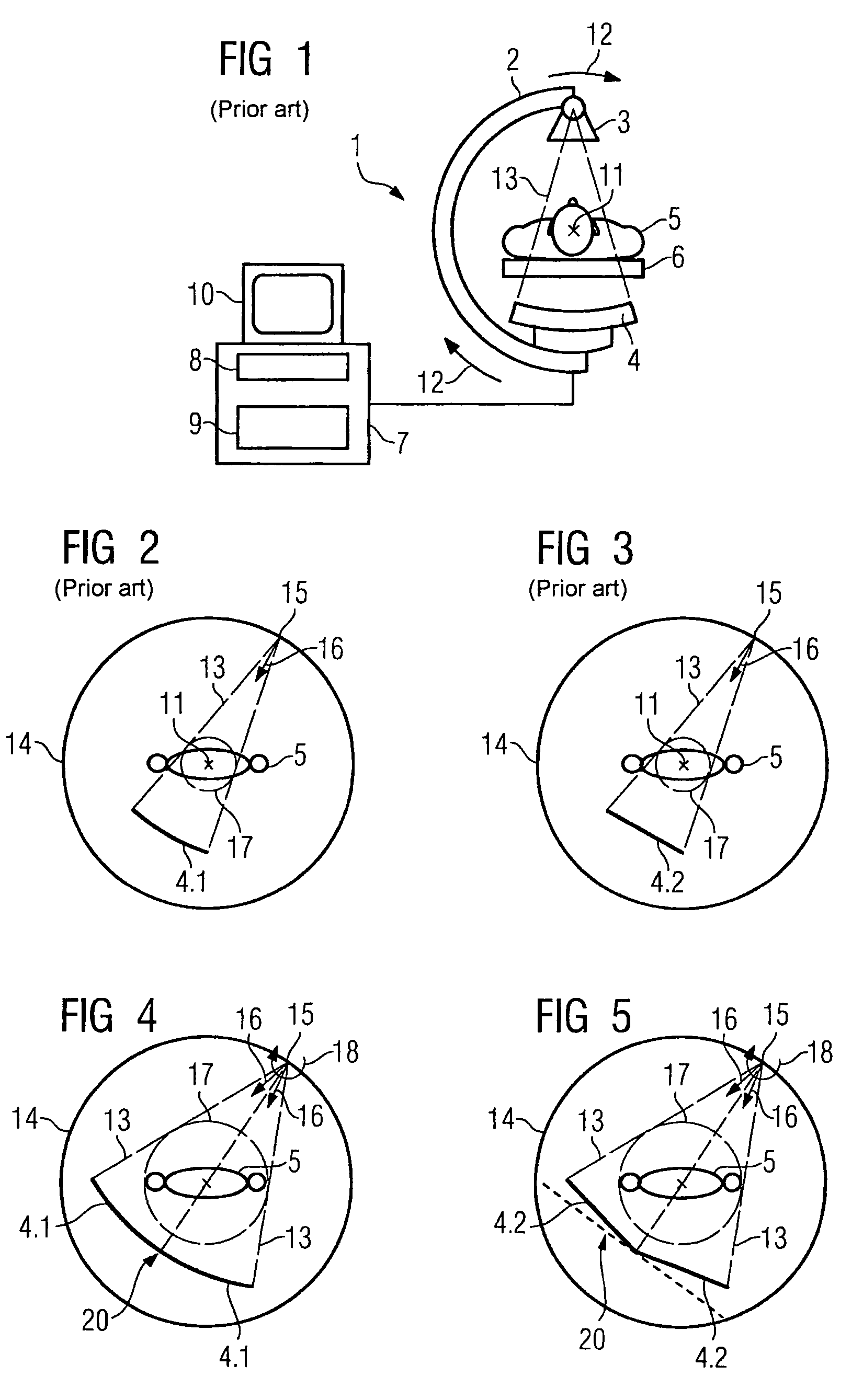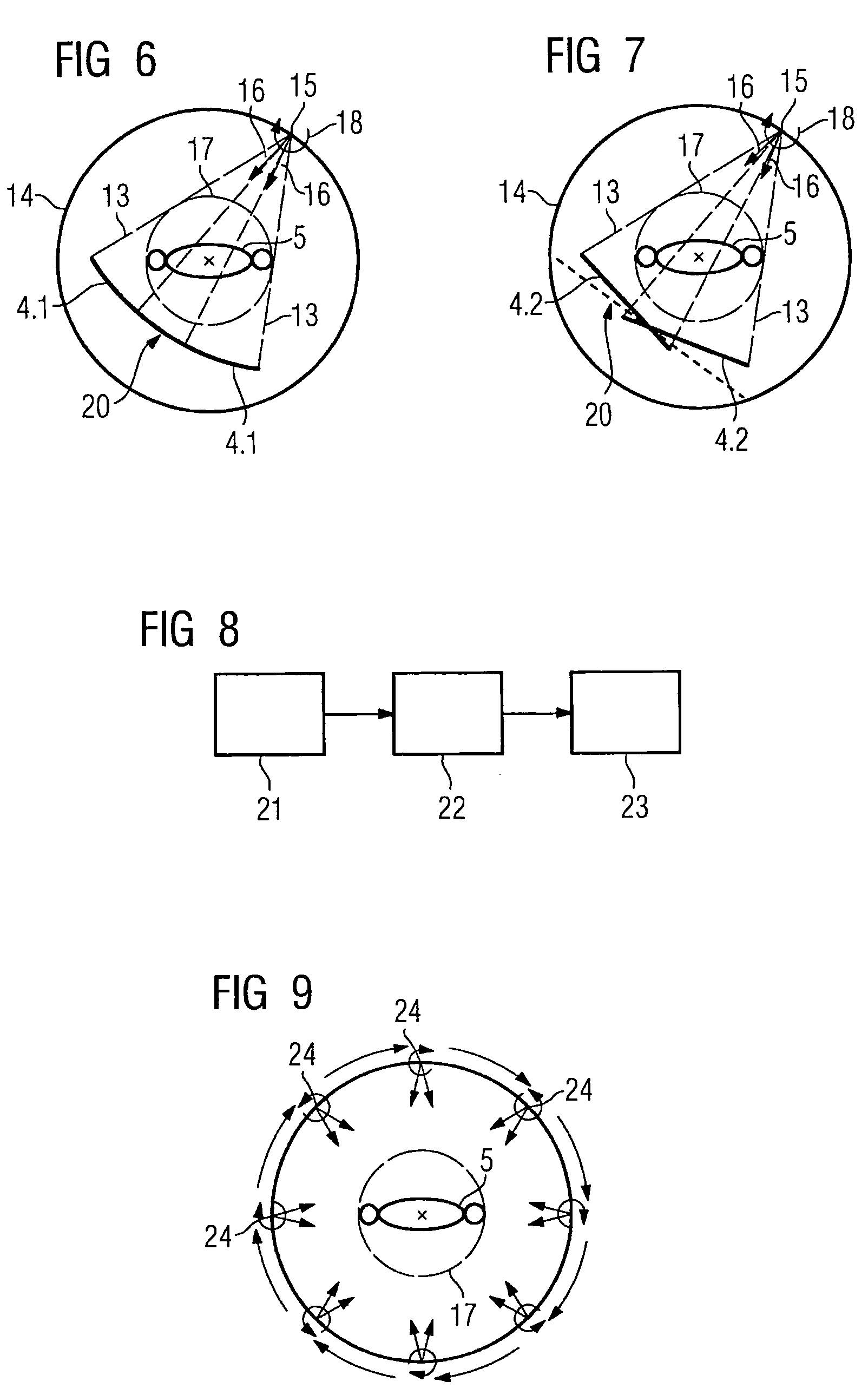Method for reconstructing a three-dimensional image volume and x-ray devices
a three-dimensional image and volume technology, applied in the field of three-dimensional image volume and x-ray device reconstruction, can solve the problems of transaxial truncated projection, difficult to qualify diagnosis, and often not being able to reconstruct the complete region of interest, and achieve the effect of advantageous execution
- Summary
- Abstract
- Description
- Claims
- Application Information
AI Technical Summary
Benefits of technology
Problems solved by technology
Method used
Image
Examples
Embodiment Construction
[0059]FIG. 1 shows a schematic representation of a C-arm x-ray system 1, which comprises a C-arm 2, to which an x-ray source 3 and an x-ray detector 4 disposed opposite to each other are attached, generally in fixed alignment. The x-ray detector 4 can be a flat or curved x-ray detector 4 based on a solid body for instance. Such an x-ray detector 4 can comprise a scintillator for instance and a detector matrix with pixel elements. The x-ray source 3 generates an x-ray beam 13. The C-arm can be rotated (angled) about a region of interest 5 which is located on a patient bed 6, for instance by rotation about a first rotation axis 11 in the direction of the arrow 12 for instance. In this process, 2D projection images are recorded for different angular positions from the respective projection directions of the recording system. The region of interest 5 is arranged here such that its center point lies on the axis of rotation 11.
[0060]The 2D projection images thus obtained are forwarded to ...
PUM
 Login to View More
Login to View More Abstract
Description
Claims
Application Information
 Login to View More
Login to View More - R&D
- Intellectual Property
- Life Sciences
- Materials
- Tech Scout
- Unparalleled Data Quality
- Higher Quality Content
- 60% Fewer Hallucinations
Browse by: Latest US Patents, China's latest patents, Technical Efficacy Thesaurus, Application Domain, Technology Topic, Popular Technical Reports.
© 2025 PatSnap. All rights reserved.Legal|Privacy policy|Modern Slavery Act Transparency Statement|Sitemap|About US| Contact US: help@patsnap.com



